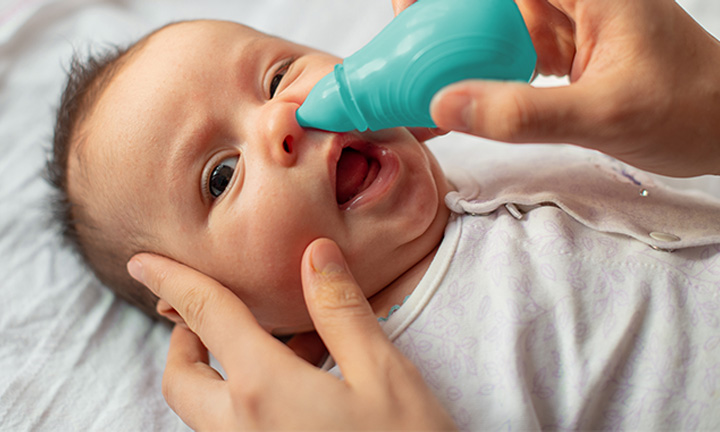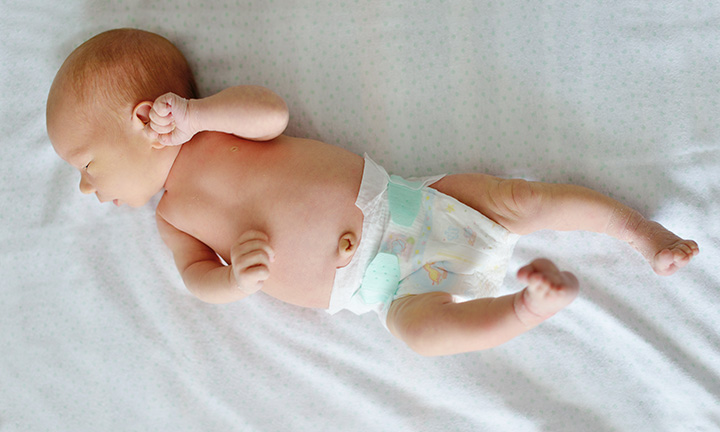
Benefits of Vitamin D for Babies


As a parent, you want your little one to get proper nourishment and nutrition. That includes vitamin D, a very important nutrient for babies. Since breast milk alone doesn’t provide enough vitamin D for babies, breastfed infants and those who are partially breastfed will need vitamin D supplementation to help boost immunity, build healthy and strong bones, and prevent diseases like rickets. We've got all the details on the benefits of vitamin D for babies and how much your newborn needs.
What Does Vitamin D Do for Babies?
Vitamin D is essential for babies (as well as for older children and adults) because it helps the body absorb calcium. Working together, calcium and vitamin D build bones and help keep them strong and healthy.
When babies don’t get sufficient vitamin D, they could potentially develop rickets, a rare disease that involves softening and weakening the bones.
In addition, vitamin D plays a role in fighting infection, maintaining a healthy heart, strengthening the immune system, and decreasing the risk of chronic disease. These are among the many benefits of vitamin D drops for babies.
Risks for Babies Who Lack Enough Vitamin D
When babies lack enough vitamin D, one potential consequence is weakened or softened bones. This can make a baby’s legs appear curved or bowed. Keep in mind that bowlegs are actually common in babies and toddlers but usually correct themselves before the age of 2. Bowlegs in babies and young toddlers are within the range of normal development, thought to be related to the tightly curled-up position of babies in the uterus.
However, there are symptoms and conditions, including rickets, that can result from extreme vitamin D deficiency and hinder your child’s physical development. These may include:
Additionally, researchers have found correlations between vitamin D deficiency and certain diseases and conditions that could occur as babies get older and reach childhood or adulthood, such as:
Although these diseases and complications sound scary, remember that they are rare. With the right supplementation, your baby will get the necessary nutrients to stay strong and healthy! If you have any questions or concerns, consult your child’s healthcare provider.
In Summary
Getting the right amount of vitamin D is vital for babies, as a deficiency may cause rickets, a disease that softens and weakens the bones. Long-term vitamin D deficiency is also linked to other diseases that could appear later in childhood or adulthood.
How Much Vitamin D Is Necessary for Babies?
The American Academy of Pediatrics and the Institute of Medicine recommend a daily intake of 400 IU (international units) of vitamin D for babies within the first year. For babies older than 1 year, the amount increases to 600 IU per day. To determine whether your baby is getting enough vitamin D, consider the following:
It’s also important to keep in mind that every baby is different. Some babies may require more vitamin D, including those who’ve had a recent surgery, are taking medications that block vitamin D, or have the following conditions:
To determine the appropriate amount of liquid vitamin D (vitamin D drops) to give your little one, consult the chart below and your child’s healthcare provider.
Sources of Vitamin D
There are various ways to get vitamin D into your body. It’s more difficult for babies to obtain vitamin D naturally, so supplementation is the best option. Sources of vitamin D include the following:
In Summary
Babies can’t get enough vitamin D from natural sources alone, such as breast milk, sun exposure, and food. If your baby isn’t consuming enough formula fortified with vitamin D, it’s important to supplement to at least 400 IU per day. Supplementation provides the benefits of vitamin D drops for babies, ensuring they receive the necessary vitamin D intake. Consult your child’s healthcare provider to determine exactly how much your baby needs.
How to Use Vitamin D Drops for Your Baby
Of course, it isn’t possible or safe for your baby to swallow a pill for vitamin D! Instead, your baby will get a liquid version of this nutrient. Using vitamin D drops for newborn babies is quite simple—all you need is the liquid supplement and the dropper that comes with it. Here’s what to do:
Vitamin D drops are handy for wiggly babies and particularly helpful when caring for premature babies or fussy babies. If you ever find yourself thinking, " I forgot to give my baby vitamin D drops," don't worry; just administer the dose as soon as you remember and try to maintain a consistent schedule.
For How Long Do Babies Need Vitamin D Drops?
Your baby can start taking vitamin D drops soon after birth. Most likely, your child’s healthcare provider will prescribe the standard amount, which is 400 IU daily of vitamin D for babies under 1 year, and 600 IU daily for those over 1 year. But once your baby can start getting vitamin D from other food sources (like salmon, egg yolks, and fortified foods), you may be able to reduce the amount they receive by drops.
Every newborn, baby, and child is different, so although there is a recommended dose of vitamin D for babies, it’s always best to check with your child’s healthcare provider. Most babies need the standard dose, while others may need more, and some may need to supplement for longer than others.
FAQS AT A GLANCE
Most babies need vitamin D supplementation in the form of drops to prevent deficiency of this important nutrient. The benefits of vitamin D drops for babies are crucial, as breast milk and some formulas alone don’t provide enough vitamin D, so many babies need drops to reach the recommended daily intake of 400 IU.
The Bottom Line
Babies need adequate vitamin D to stay healthy and build strong bones. Breast milk lacks enough vitamin D for babies, and babies may not be able to consume enough vitamin D–fortified formula to reach the optimal amount of this nutrient. The best solution is to supplement with vitamin D drops, which are easy for you to administer and for your baby to swallow. Supplementing with vitamin D drops provides the benefits of vitamin D drops for babies, ensuring they receive adequate vitamin D to stay healthy and build strong bones.
Although the daily recommended amount of vitamin D is 400 IU in your baby’s first year, every child is different. Talk to your baby’s healthcare provider to determine the amount of vitamin D supplementation your little one needs.
Learn more about how your baby may develop over the first 24 months here by checking out this baby growth chart! And while you're here, explore the Pampers Rewards App for rewards and discounts on all those diapers and wipes you'll go through as your little one grows.
- American Academy of Pediatrics. Caring for Your Baby and Young Child: Birth to Age 5, 6th ed. (New York: Bantam Books, 2009.)
- CDC. Vitamin D
- CDC. “When, What, and How to Introduce Solid Foods.”
- Healthy Children. “How to Use Liquid Medications.”
- Healthy Children. “Sun Safety.”
- Kids Health. “Vitamin D (for Parents).”
- La Leche League International. “Vitamin D, Your Baby and You.”
- Mayo Clinic. “Vitamin D.”
- NIH. “Vitamin D and Immunity in Infants and Children.”
- WHO. “Vitamin D Supplementation for Infants.”
Read more about Baby
Related Articles
Join a World of Support
through Pregnancy and Parenthood.
TRACK WITH TOOLS
LEARN WITH EXPERTS
GET REWARDED













